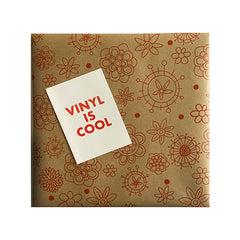



The Daisy Age (Vinyl 2LP)
In Stock - Ships next business day
Earn 6 F|O Points on this item
Free Shipping on NZ orders over $70
It wasn’t really a movement, barely even a moment, but the Daisy Age was an ethos that briefly permeated pop, R&B and hip hop. The name was coined by Long Island trio De La Soul; they claimed D.A.I.S.Y. stood for “da inner sound, y’all”, but then De La Soul said a lot of things. Playfulness and good humour were central to their 1989 debut album, which cast a long, multi-coloured shadow. The 90s, it promised, would be a lot easier going than the 80s.
Tracklisting
1. A Roller Skating Jam Named "Saturdays" - De La Soul featuring Q-Tip & Vinia Mojica
2 Bonita Applebum - A Tribe Called Quest
3 Sunshine Men - The Freestyle Fellowship
4 Mistadobalina - Del Tha Funkeé Homosapien
5 What's Up Doc? (Can We Rock?) (K-Cut's Fat Trac Remix) - Fu-Schnickens with Shaquille O'Neal
6 Doowutchyalike - Digital Underground
7 Peachfuzz - KMD
8 Doin' Our Own Dang - Jungle Brothers
9 Mama Gave Birth To The Soul Children - Queen Latifah featuring De La Soul
10 O.P.P. - Naughty By Nature
11 Where I'm From - Digable Planets
12 It's A Shame (My Sister) - Monie Love featuring True Image
13 K Sera Sera - Justin Warfield
14 All For One - Brand Nubian
15 Case Of The P.T.A. - Leaders Of The New School
16 My Definition Of A Boombastic Jazz Style - Dream Warriors
17 The Choice Is Yours - Black Sheep
18 Age Ain't Nothin' But A # - Chi-Ali
19 We Run Things (It's Like Dat) - Da Bush Babees
20 You're Not Coming Home (Mase's Funkay Recall Mix) - Groove Garden
In Britain, the timing for De La Soul’s “3 Feet High And Rising” couldn’t have been better. The acid house explosion of 1988 would lead to a radical breaking down of musical barriers in 1989. Just 18 months earlier, snobbery had been so rife that Bomb The Bass’ ‘Beat Dis’ was faked as a US import (pressed in the States, then imported back) to get club play; by the summer of ’89, however, something as previously unhip as Chris Rea’s ‘Josephine’ could become a dancefloor hit and indie veterans Primal Scream would be reborn as space-seeking Sun Ra initiates and still taken seriously. Ecstasy was largely responsible, of course, and its associated look – loose clothing, dayglo colours, smiley faces – chimed with the positivity of rising New York rap acts the Jungle Brothers and De La Soul, both at the heart of a growing collective called Native Tongues.
What was so new about De La Soul’s sound? Previously, sample material for hip hop had been almost exclusively taken from 60s and 70s soul and funk, especially from James Brown and his extended family – Bobby Byrd, Maceo Parker, Lyn Collins, the stuff of purists. The freewheeling collage of “3 Feet High And Rising” gleefully raided the non-U catalogues of Billy Joel and Hall & Oates; soul heroes Wilson Pickett and the Mad Lads were now abutting such unlikely material as the Turtles’ ‘You Showed Me’ and French Linguaphone lessons. The Invitations’ sweet, Drifters-like ‘Written On The Wall’ provided the hook for De La Soul’s first single ‘Plug Tunin’’ which, along with follow-up ‘Potholes In My Lawn’, referenced “the daisy age”. With the album including a cover of Bob Dorough’s ‘Three Is The Magic Number’ from Schoolhouse Rock – a song every American kid knew from Sunday morning TV – the essence of Sesame Street was everywhere.
By 1989 hip hop had made major inroads in Britain with rock fans (via Run DMC) and pubescent teens (the Beastie Boys), while NME writers had voted Public Enemy’s “It Takes A Nation Of Millions To Hold Us Back” the best album of 1988. Still, it had an air of exclusivity, with Tim Westwood its mirthless UK gatekeeper. De La Soul were also fans of Public Enemy, the Beastie Boys and Run DMC; they were fans in general, and threw their love of music into the blender, giving more time to melodies and mind-expanding samples while most contemporary rap records still revolved around the biggest sounding beats.
As hip hop rapidly became a bigger commercial concern, rights owners smelt money and – for the rest of the 90s – made sample clearance unfeasibly expensive. Robbed of their pick-and-mix approach, some Daisy Age-era acts moved towards consciousness and a jazz-leaning live feel, which down the line would lead to the rise of Arrested Development, and beyond them the Fugees and the Roots; meanwhile, on the West Coast, the gut-churning violence and misogyny of Dr Dre’s “The Chronic” took rap to a whole new commercial level. Neither direction, sadly, would involve much use of Sesame Street, Turtles samples, or magic numbers. - BOB STANLEY
Released
- Related products
- Recently viewed



